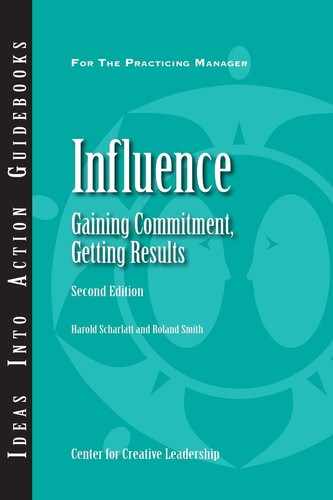Conclusion

Influencing others is not easy, especially if you do not have direct authority to back up your request. Even if you do, as with direct reports, gaining commitment takes more skill than getting compliance. As you take on different roles in your organization, change jobs, or accept positions in your community, you will draw on your skills as an influencer again and again. Your ability to influence others depends not just on your learning and practicing different tactics. The thoughtful use of tactics is just part of what can be a complex interaction that plays out differently at different levels of the organization and among different people. Achieving results by influencing others can also include the following factors:
• a reputation of trust, credibility, and flexibility
• communication and relationship skills
• a focus on creating broad, shared benefits
• an ability to identify with the interests of others
• avoiding a perception of manipulation or selfishness
• the ability to read situational cues such as body language or the setting you are in (a formal office or over lunch, for example)
Influencing someone to endorse your agenda or to commit to your desired goals may not happen immediately. Each individual you attempt to influence has to carefully consider the costs and benefits involved with agreeing to your position. This guidebook touches on but one aspect of influence—tactics. Leaders at every organizational level should be well versed in these tactics and their use. On a broader scale, influence emerges as a multifaceted, relational, power-shifting, and collaborative enterprise. Differences—in culture, age, and gender, for example—can complicate your role as a leader and how you influence others. In all of its aspects, influence frames direction, alignment, and commitment among individuals, teams, and organizations. It stakes out significant ground in strategy, transformation, and innovation, among other spaces (see Figure 3).
The response you get to your influence efforts will test your flexibility and adaptability as a leader, and will shape your expectations for future encounters. Learning how to get results through others is a long-term, ongoing process—just like many other aspects of leadership practice.

